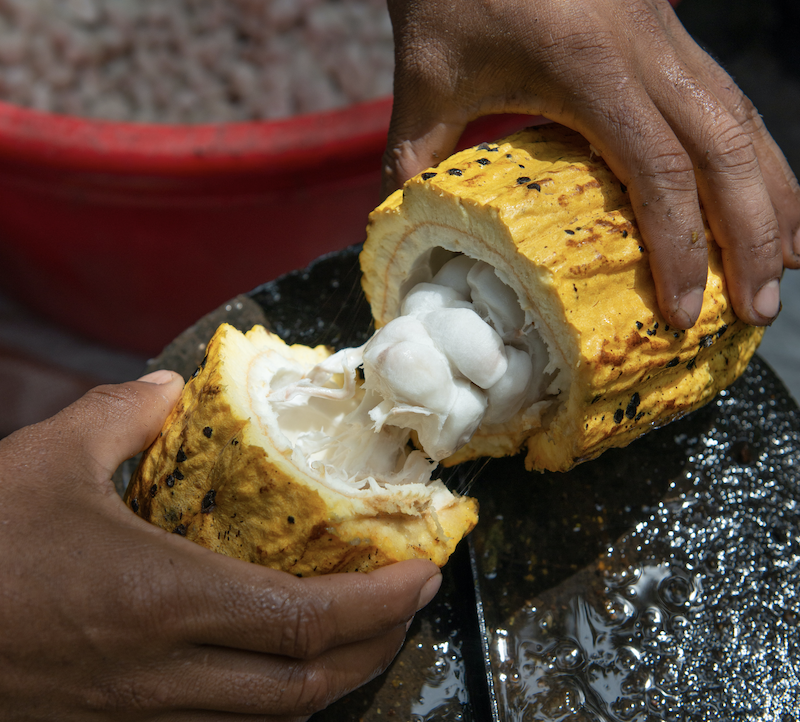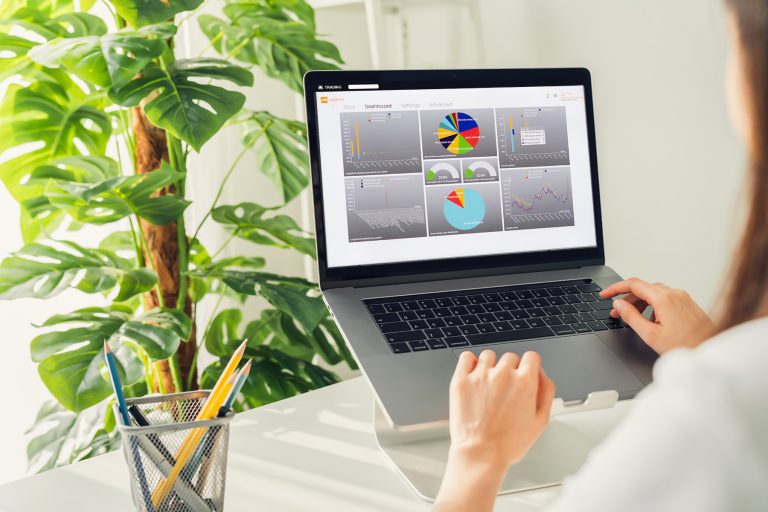Commodity trade and risk management (CTRM) solutions are by default complex and rich in functionalities to support all the flexibility that characterizes the industry. That’s why the full Agiblocks CTRM suite offers a wide variety of detailed features and functionalities. In many cases specialized for a certain commodity or commodity group. You can read all about it here.
The specialization of our software is what makes it the foremost CTRM solution for agricultural commodities in general, and for four of the biggest soft commodities specifically; Sugar, Coffee, Cocoa and Grains. That’s why we would like to address these commodities in depth, as well as explain to you how Agiblocks caters to them with unrivalled dedication. In this second episode of our series, we will be focusing on cocoa.
In chapter 1, we will briefly talk about the history of the product and several aspects that help explain why cocoa is such a complex commodity. In chapter 2, we’ll turn the spotlight on Agiblocks’ prowess to handle that complexity in ways that no other CTRM solution can.
1. The complexity of cocoa: an introduction
Cocoa was first consumed by the Olmecs, an ancient civilization in Mexico, around 1500 B.C. They realized the cocoa fruit was edible by observing rats eating the fruit. In the early stages the cocoa was crushed and mixed with water and spices and consumed as a beverage. The Mayans and Aztecs quickly adopted the cocoa beverage and also developed effective methods of cultivating cocoa beans. Interestingly, they also used the beans also as a measuring unit and as a form of currency. When the Spanish discoverers first tasted cocoa, they were immediately interested in this new beverage and transported it back to Europe, where it became highly popular in the 17th century.
Cocoa beans are the dried and fermented seeds of Theobroma cacao. Processing cocoa beans delivers cocoa powder and cocoa butter, which are both ingredients for chocolate.
1.1 Production and processing
Cocoa beans are produced in areas close to the equator in wet, tropical climates. The fruits or pods of a cocoa tree have a unique characteristic as they grow directly from the trunk or large branches of the tree in comparison to most fruits, which grow at the end of branches.
Cocoa production is a highly labor-intensive process. The entire production cycle is performed by hand and the majority of farms are family owned businesses. Worldwide production is almost exclusively performed on small farms, no bigger than 12 acres. The three biggest producing nations are Ivory Coast, Ghana and Indonesia.
The pods of the cocoa tree change color during their ripening process and when they turn yellow or orange, they are ready to be harvested. A single tree can be harvested at various times as the pods will not ripen at the same time. The trees are therefore checked numerous times during harvest time to determine each pod separately. This is also the reason the harvest is performed by hand, as machines are not able to determine which pods are ready for harvesting. The workers use a large knife attached to a pole to cut the pods from the tree. The beans are then cut open with a machete and the beans and pulp are separated from the waste and laid out onto grates for several days, to undergo a process called ‘sweating’, which enables the pulp to liquefy through fermentation. The liquefied pulp slowly drips of the beans and leaves the beans ready for further processing.
The fermentation is critical to the quality of the cocoa beans, as this chemical process alters the eventual flavor of the beans. The next step is the drying of the beans. This is commonly performed by placing the beans on a bamboo mat and letting the sun dry them for several days. In rainy climates the beans are dried indoors, sometimes with artificial hot air. This is less desirable as it may cause issues with the quality. During the drying process, the beans are shuffled multiple times to enhance the drying process and quality of the beans. When the beans are completely dried, they will be ready for transport.

1.2 Transport and application
Before transport, the beans are collected on central collection sites, where the numerous farmers of the surrounding area can sell their beans. The beans are then mixed with beans from other farms and are bagged in jute bags of 200 pounds each. These bags are transported to a shipping center where they will be loaded onto ships.
The most common destinations for the beans are the United States, the Netherlands and the United Kingdom, as they are major producers of chocolate. Cocoa beans are being increasingly transported in bulk quantities, which significantly reduces transport costs.
The most common use of cocoa is of course to produce chocolate. The beans are grounded into powder and the oil is extracted and is converted into cocoa butter. These two products can be mixed with a number of ingredients: milk, sugar, flour and eggs in order to create chocolate bars, cakes, chocolate milk and numerous types of sweets and candy. However, cocoa can be used in a number of other products besides food. Cocoa butter is very useful in the production of pharmaceuticals. Its unique character where the butter remains solid at room temperature and melts at body temperature, makes it ideal for this purpose.
2. Managing Cocoa’s Complexity in a CTRM Solution
CTRM solutions for cocoa need to handle the general complexities of any particular commodity, along with providing features such as usability, performance and integration. However, cocoa trading has a number of very specific aspects to it that not every CTRM solution will be able to handle with ease, or even at all. We will walk you through some of them, as Agiboo has made it its mission to handle all of them – with Agiblocks.
2.1 The Currency Situation
One of the major specifics of cocoa, and possibly the biggest factor that sets cocoa apart from other commodities in terms of pricing and administrative implications, is the fact that trading of cocoa takes place on two exchanges: New York Mercantile Exchange (NYMEX) and the Intercontinental Exchange (ICE) in London.
The prices in London are based on cocoa from Africa, while New York bases its prices on the South-Asian market – which plays an important part on pricing in general: NYMEX uses dollars, ICE is based on pound sterling.
Obviously, your Agiblocks software is equipped to handle that duality.
2.2 Other pricing factors
In general, weather conditions are always a critical factor in agricultural commodities and cocoa is no exception. Cocoa production requires very specific weather conditions, both in temperature and rainfall. The global warming can have far-reaching consequences for cocoa farmers and the overall supply of cocoa.
Political unrest can play a significant role in the price stability of cocoa as well. Major producing countries are Ivory Coast, Ghana and Indonesia, where political unrest is not uncommon. This uncertainty about developing political changes and unrest can have a major impact on the prices and also the supply. That of course applies to any number of commodities, but as far as cocoa goes specifically, there is one important factor here: Ivory Coast and Ghana together are responsible for 60 to 70 percent of global production of cocoa beans. If either – or worse, both – of them close their borders for whatever reason, it would have a major impact on the industry as a whole.
Moreover, in terms of pricing, the oligopolic position of these countries has resulted in price fixing. The Ghana Cocoa Board is a Ghanaian government-controlled institution that fixes the buying price for cocoa in Ghana, while the GUCE in Ivory Coast does the same.
The option model specific to these pricing agreements can be found in Agiblocks.
Another specific political factor is child labor, which was found to be common on cocoa farms in Africa. With increased inspections on eliminating child labor and establishing proper wages, the productions costs for cocoa will increase, which will consequently influence the eventual price of cocoa.
The living standards in countries such as China and India are steadily increasing, resulting in a rising demand for products that were previously considered a luxury such as chocolate. These enormous populations require a huge increase in cocoa production in order to meet the demand for chocolate. There is a small number of leading companies active in the chocolate producing industry. Due to this limited number of companies, a change in demand from one of these companies can have a great impact on the prices of cocoa.

2.3 Logistics: hedge ratios
Agiblocks isn’t limited to a single particular commodity, as it focuses on a group of commodities that it has extensive experience with trading – including our four specialized commodities (cocoa, coffee, sugar and grains). For each of these commodities the business logic and processes needed to manage it effectively are embedded in Agiblocks and its modular design allows more commodities to be added whenever needed.
What this means is that it includes specific functionality for specific commodities that are often missing from more general legacy CTRMs including. Turning our attention back to cocoa, this means for instance that ratio hedging is supported. Cocoa beans are generally transported in jute bags by sea container, of which the inside of the container is completely wrapped in insulating material, thus creating the ideal climate. However, there is no universally agreed upon size for these bags. Ghana and Cameroon ship 60kg bags, whereas Costa Rica uses 55kg bags.
Agiblocks supports all sizes, so you can leave your pocket calculator out of the equation.
On top of that, the cocoa commodity has a specific trading logic of its own, being traded on multiple exchanges in multiple currencies while the physical commodity has very specific attributes such as bean size, infestation, certification, and so on. One very important aspect is the changes in weight before and after transport; how do you load exactly 20 metric tons of cocoa beans? Well, you don’t. Moreover, the weight tends to diminish marginally as cocoa beans can dry out during transport. For this reason, there is the concept of tolerance and franchise. Check out our Agiboo Tutorial that covers this example in more detail:
Side note: invoicing in your Agiblocks software can also be adjusted to reflect real-world differences in weight bought and received, just as easily!
2.4 Product properties
Over time, a number of cocoa-specific product properties have emerged that need to be ‘understood’ by the CTRM. As a corollary, the system needs to be adaptive to the complex landscape of the industry, which has a very rich history and heritage as well as a quintessentially dynamic future. Any software solution should reflect that by being able to adapt to new developments and conditions. While many things have changed over the years, Agiblocks is unique in the continuous processing of all those variables.
However, there is an aspect of cocoa beans that is very much a given, and that is the fact that the chocolate industry also consumes semi-finished products, which are derived from the cocoa beans, such as cocoa powder, cocoa butter, cakes and cocoa liqueurs. These semi-finished products usually are traded, priced and/or hedged based on ratios versus the original cocoa bean.
2.5 Certification
In the cocoa chain, increasing attention is being paid to sustainability. This is reflected, among other things, in the sustainability of the production conditions of the cocoa farmers themselves. UTZ is a certification program for sustainable farming of, among others, cocoa.
UTZ certification shows consumers that products have been sourced, from farm to shop shelf, in a sustainable manner. To become certified, all UTZ suppliers have to follow our Code of Conduct, which offers expert guidance on better farming methods, working conditions and care for nature. This in turn leads to better production, a better environment and a better life for everyone.
Now, say you are in the business of selling cocoa to chocolate producers, and you have just sold a shipment of UTZ certified beans. Your buyer wishes to receive that shipment as soon as possible, but transport from Ghana is still several weeks out. Meanwhile, your storage facility has the right volume in stock, but that particular batch comes from elsewhere and has no UTZ certification. The system allows you to exchange certification within your own product balance, provided you don’t sell more uncertified stock than you buy. Agiblocks has the tools to set up that exchange in your CTRM software.
Mind you, these are just a few of the specific issues around cocoa trading that are often either not supported in a generic CTRM solution, or may require some form of work-around to handle. And those work-arounds don’t come easily. Because some of these aforementioned factors may seem like small areas of functionality, to add them to an existing CTRM is a major undertaking as that the functionality needs to work across the system. For example, in position management reporting, for hedging purposes where traders need to hedge small quantities of commodities individually; both currencies and terminal markets, where it impacts pricing, price formulae and so on.
Adding a small area of specificity for a commodity has huge ripple effects across the entire solution that also need to be considered. As a result, anyone looking to procure a CTRM solution for cocoa trading should ensure that the short-listed CTRM solutions are able to handle such specifics along with all of the other expected functions and features of a good and usable solution. This actually narrows the field of potential solutions quite considerably.
3. Agiblocks: a true cocoa solution
Agiblocks is a multi-commodity capable system out of the box. Built on modern technology, it provides functionality for trading physical commodities and their terminal market instruments. It supports contract management, logistics fulfillment, forex and hedging, and it has tools for real-time risk analysis and risk management. It supports both trading management and financial management from the same source of data and within the same application. Its modular structure allows users to implement an end–to-end solution or to select individual functions to implement only the functions that are needed.
While Agiblocks is a strong contender across many commodities, it is extremely strong in terms of meeting the specific requirements of the cocoa markets with a number of customers implemented and using the software to support their cocoa trading businesses. Agiblocks provides all of the functionalities discussed above that are specific to cocoa.
Agiboo has seen considerable success in recent years by offering commodity-specific and pre-configured versions of its Agiblocks solution to customers and it has gained a reputation for delivering these commodity-specific solutions as opposed to a more generic approach.
The approach of providing pre-configured versions of Agiblocks for commodities like cocoa is really paying off, as it allows smaller businesses to implement faster and more cheaply by reducing implementation complexity. In the words of Erik van der Flier, managing director of Agroforce: “Cocoa is a very peculiar, very specific product. In my opinion, Agiboo is the one brand that has captured the challenges of our industry to best approach our daily tasks and operations as commodity traders.” You can read the full interview here.
Experience Agiblocks and judge for yourself
Experience our CTRM software solution for free and get a front-row seat to all the benefits Agiblocks has to offer with our free demo. The full range of Agiblocks functionality is available within the demo environment for your browsing leisure. Familiarize yourself with the tools and features of our powerful and agile software solution and find out how you can make the daily practices of commodity trade and risk management more efficient. Fill out the form on agiboo.com/demo and we will get back to you.

